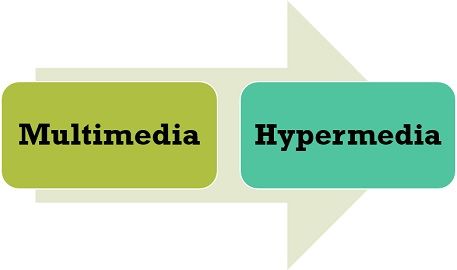Key Differences between Multimedia and Hypermedia

Multimedia and hypermedia are related concepts that involve the integration of various media types, but they have distinct characteristics and functionalities. Here are the key differences between multimedia and hypermedia:
Multimedia:
-
Definition:
- Multimedia refers to content that incorporates a combination of different forms of media, such as text, audio, video, graphics, animations, and interactive elements.
-
Media Integration:
- Multimedia integrates multiple types of media within a single content environment to create rich and dynamic experiences. This includes combining different media types such as text, images, audio, and video.
-
Interactivity:
- While multimedia content can include interactive elements, it does not necessarily require hyperlinks or nonlinear navigation. Interactive elements in multimedia may include buttons, menus, sliders, forms, quizzes, games, and simulations.
-
Navigation:
- Navigation in multimedia content may be linear or nonlinear, depending on the structure and design of the content. Users may navigate through sequential slides or sections, or they may have limited interactivity with the content.
-
Examples:
- Examples of multimedia include video presentations, slideshows, audio recordings, animations, and interactive tutorials.
Hypermedia:
-
Definition:
- Hypermedia is an extension of hypertext that includes hyperlinks to other forms of media, such as images, audio, video, and interactive elements.
-
Media Integration:
- Hypermedia incorporates hyperlinks to connect different media elements within a content environment, allowing users to navigate between related content pieces seamlessly.
-
Interactivity:
- Hypermedia content emphasizes interactivity through hyperlinks, allowing users to explore content in a nonlinear manner by clicking or interacting with links to access additional information or related media.
-
Navigation:
- Navigation in hypermedia content is nonlinear, enabling users to navigate freely between interconnected media elements by following hyperlinks. Users can access content in a non-sequential manner, moving between different sections or topics as desired.
-
Examples:
- Examples of hypermedia include interactive websites, multimedia presentations with embedded hyperlinks, electronic textbooks with cross-referenced content, and interactive educational software.
In summary, multimedia refers to content that combines various media types, while hypermedia specifically includes hyperlinks to connect different media elements and enable nonlinear navigation. While multimedia may include interactive elements, hypermedia emphasizes interactivity through hyperlinks and nonlinear navigation, allowing users to explore interconnected content in a dynamic and interactive manner.
Thank you,
